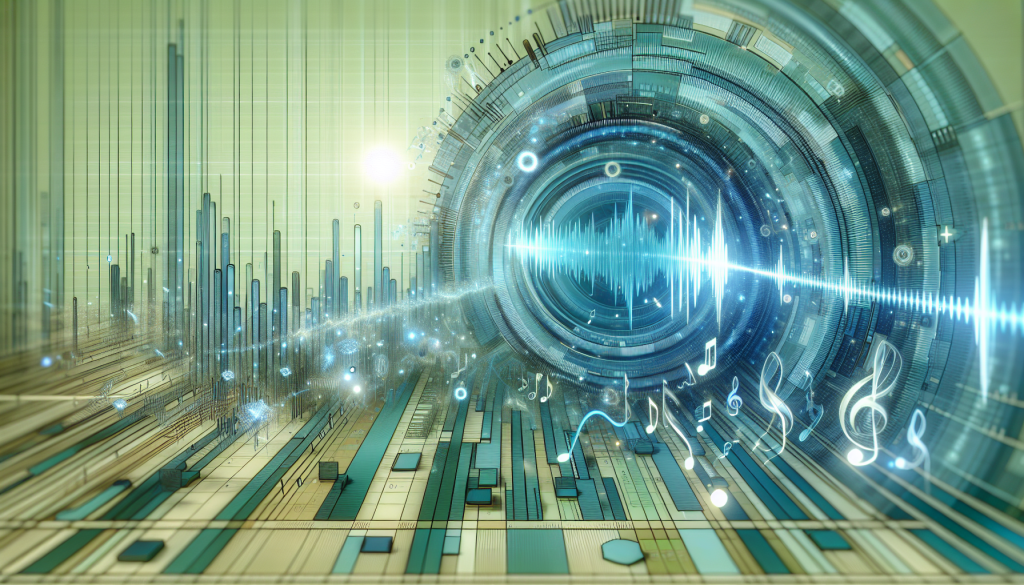Understanding Video Transcription and Translation
As we venture into an increasingly globalized world, effective communication across different languages and cultures becomes crucial. Video transcription and translation services play a significant role in this process, especially for individuals, businesses, educational institutions, and medical institutions that aim to disseminate information in a diverse, global setting.
Definition and Importance
Video transcription involves converting spoken language in a video into written text. Translation, on the other hand, involves converting the transcribed text from one language to another LinkedIn. These services are integral to various industries as they enable efficient communication and sharing of information across different languages and cultures.
One of the key benefits of video transcription and translation is its ability to improve accessibility. By providing captions and subtitles in multiple languages, content becomes accessible to a wider audience, including those with hearing impairments or non-native language speakers. This can be particularly beneficial for businesses looking to expand their reach in foreign markets, or for educational institutions providing learning materials to students from diverse linguistic backgrounds Transcription Wing.
Moreover, video transcription and translation can significantly enhance Search Engine Optimization (SEO) efforts. Transcribed and translated content increases the visibility of the video in search engine results, thereby attracting a wider audience Transcription Wing. As pointed out by Neil Patel, video transcripts for SEO can maximize accessibility and reach, allowing for a broader audience to engage with the content.
Process of Transcription and Translation
The process of video transcription and translation involves a few key steps. First, the spoken language in the video is transcribed into written text in the same language. This transcription can be done manually by a professional transcriber, or by using automated transcription software.
Once the transcription is complete, the text is then translated into the target language(s). This translation process can also be done manually by a certified translator or using automated translation tools. However, human translators often provide more accurate and culturally sensitive translations, especially for complex or industry-specific content.
It's important to note that the quality and accuracy of the transcription and translation can significantly impact the effectiveness of the communication. Therefore, it's crucial to choose reliable and certified translation services when dealing with important or sensitive information.
In conclusion, video transcription and translation are powerful tools for enhancing global communication and accessibility. By understanding their importance and the process involved, individuals and organizations can better leverage these services to reach and engage their target audience.
Transcription Vs Translation
The spheres of transcription and translation often overlap, especially in contexts like video content where both services might be required. However, these two processes serve distinct purposes and are characterized by different methodologies.
Key Differences
Transcription refers to the conversion of spoken words into written words. It is the process of documenting audio or video files into text format, with a focus on accurately capturing all spoken content, including inaudible elements, laughter, and pauses.
On the other hand, translation involves converting text from one language into another. Professional translation goes beyond literal language conversion; it requires understanding the purpose of the document and the intended audience to deliver a suitable conversion. Translators may also need to undertake localization work, such as changing measurement or date formats, to better suit the target audience.
From these definitions, it's clear that while both transcription and translation deal with the conversion of content, their approach and output vary significantly.
| Transcription | Translation | |
|---|---|---|
| Definition | Converts spoken words into written words | Converts text from one language to another |
| Focus | Captures all spoken content | Understands the purpose and audience of the document |
| Localization Work | Not typically required | Often necessary |
| Outcome | Written copy of audio or video content | Text that resonates with the target audience in their language |
The Role of Transcription in Translation
In the context of video content, transcription often plays a significant role in the translation process. A written copy of the audio content, obtained through transcription, is typically required for the translator to work on when converting audio to text.
For instance, in the process of translating a video for a global audience, the first step would involve transcribing the spoken dialogues into written text. The translator would then translate this transcribed text into the desired language(s). Hence, transcription is a crucial preceding step in the translation of audio or video content.
Transcription and translation are integral to various industries, including business, legal, medical, and media, as they enable efficient communication and the sharing of information. Whether it is medical document translation, legal document translation, or technical translation services, these processes ensure that content is accessible and comprehensible to a global audience.
Challenges in Video Transcription and Translation
Video transcription and translation services are vital tools in today's global business environment. However, they do come with their own set of unique challenges. Recognizing dialects and accents and handling technical jargon are among the most common issues that arise during the process of video transcription and translation.
Recognizing Dialects and Accents
One of the major challenges in video transcription and translation is the recognition of various dialects and accents. Automatic speech recognition (ASR) technology, often used in transcription and translation services, can struggle with accurately transcribing and translating accents, dialects, and slang.
Background noise, speaker identification, and the varying speeds at which individuals speak can further complicate this task. Additionally, maintaining synchronization between the audio and the text in the video, especially if there are multiple speakers or if the video has complex visuals or non-verbal elements, can be challenging.
To overcome these limitations, many service providers utilize the expertise of human transcribers and translators. These professionals have the ability to understand and interpret various accents and dialects, providing accurate transcriptions and translations that take into account these linguistic nuances (Quora).
Handling Technical Jargon
Another challenge in video transcription and translation is handling technical jargon. Videos, especially those in specialized fields such as medical, legal, or technical industries, often include industry-specific terminology. Transcribing and translating these terms accurately is crucial to preserve the original message of the video.
ASR technology can struggle with accurately recognizing and translating this technical jargon, especially if it's industry-specific or if it's not commonly used in everyday language. This is where the expertise of a certified translator or a professional familiar with the specific industry jargon comes into play.
Understanding and accurately transcribing and translating technical jargon not only requires a deep understanding of the language but also a thorough understanding of the specific industry. For instance, medical translation services require translators with medical knowledge, while technical translation services require translators familiar with technical terminologies.
Despite these challenges, video transcription and translation services continue to play a vital role in facilitating global communication. By understanding these challenges and working towards effective solutions, these services can continue to evolve and improve, enabling seamless and accurate communication across different languages and cultures.
Overcoming Transcription and Translation Challenges
Achieving accurate and efficient video transcription and translation involves overcoming a number of challenges. Fortunately, advancements in technology and the availability of skilled professionals offer viable solutions.
Benefits of Automated Tools
Automated transcription and translation tools can significantly speed up the process which can otherwise be time-consuming and labor-intensive. For instance, AI transcription and voice recognition software use advanced artificial intelligence to convert audio or video files into text, mimicking the way humans transcribe audio or video files (SpeakWrite).
AI transcription is generally more cost-effective than human transcription, as it only requires a subscription or premium purchase to transcribe audio in bulk. Some AI transcription services, like Krisp, offer accurate meeting transcriptions without any subscription cost (Krisp.ai).
Role of Human Transcribers and Translators
While automated tools offer speed and cost-effectiveness, the role of human transcribers and translators cannot be discounted. Human transcription is generally more accurate than AI transcription, especially in situations where the context may be more technical. However, AI transcription is faster, capable of transcribing an hour-long audio file in a matter of minutes, while human transcription may take several hours or days for a long audio file.
A hybrid solution that combines AI transcription and human transcription can be beneficial. AI transcription can be used for initial processing to generate drafts quickly, and then human transcriptionists can review and refine the transcripts for accuracy and context (Krisp.ai).
By utilizing both automated tools and human expertise, it is possible to overcome the challenges inherent in video transcription and translation. Whether you need birth certificate translation, medical document translation, or any other form of certified translation services, there are solutions available that can deliver high-quality results efficiently and effectively.
Enhancing Accuracy in Transcription and Translation
In the realm of video transcription and translation, accuracy is of utmost importance. The smallest of errors can lead to misunderstandings or misinterpretations of the content, which can be detrimental in certain fields like legal, medical, or financial sectors.
Importance of Contextual Understanding
The process of transcribing and translating video content goes beyond simply converting words from one language to another or from speech to text. It involves understanding the context, nuances, and subtleties of the spoken language. This is where the expertise of a certified translator becomes crucial.
Human transcription, wherein trained human transcribers manually convert audio or video files into text, is known for its accuracy and ability to handle complex conversations, dialects, and accents. While AI transcription is faster, human transcription is generally more accurate, especially in situations where the content may be more technical.
Moreover, transcription and translation services can play a role in overcoming the limitations of automatic speech recognition (ASR) technology. Human transcribers and translators can provide accurate transcriptions and translations that take into account various accents, dialects, and slang.
Dealing with Multilingual Content
In today's globalized world, video content is often multilingual. Transcribing and translating such content can be a complex task, requiring not only language proficiency but also cultural understanding. Here again, the expertise of certified translation services can be invaluable.
Whether it's legal document translation, medical document translation, or technical translation services, accuracy is paramount. A well-translated document can effectively bridge language barriers, ensuring the intended message is accurately conveyed to the target audience.
In essence, enhancing accuracy in video transcription and translation is all about understanding the context, dealing with multilingual content efficiently, and relying on the expertise of human transcribers and translators. This not only ensures the quality of the transcribed and translated material but also enhances the reach and impact of the content on a global scale.
Role of Transcription and Translation in SEO
As more and more businesses turn to video marketing, the importance of video transcription and translation for Search Engine Optimization (SEO) has become increasingly evident.
Impact on Website Visibility
Video transcript SEO is a valuable tool that enhances a website's visibility and can contribute to driving more traffic to the website. It allows search engines to crawl and understand the content in your videos, making it easier for them to index the content and rank it higher in search results. According to research, 91 percent of businesses use video marketing, and 96 percent state that it's an “important part” of their marketing strategy (Neil Patel). Thus, incorporating video transcription and translation in SEO strategy is a key component to stay competitive.
Moreover, techniques such as video schema markup and embedding videos on your website can further bolster SEO (Neil Patel). Both techniques provide additional information to search engines about your video content, boosting your chances of ranking higher in search results.
Benefits for Global Audience Engagement
Beyond aiding in website visibility, video transcripts for SEO can maximize accessibility and reach for videos, allowing for a wider audience to engage with the content.
Providing video transcripts can improve accessibility for individuals with hearing impairments, making the content more inclusive. Additionally, translating these transcripts into multiple languages can help reach a global audience, further increasing your website's reach and engagement.
In fact, businesses seeking to expand globally often rely on certified translation services to ensure accurate and effective translation of their content. From medical translation services to website translation services, these professionals can help cater to a diverse audience, enhancing user experience and boosting SEO.
In conclusion, the role of video transcription and translation in SEO is multifaceted and highly beneficial. Not only does it enhance website visibility, but it also increases audience engagement, especially from a global perspective. As businesses continue to recognize the importance of video content in marketing strategies, the need for effective video transcription and translation services will continue to grow.
Future of Transcription and Translation Services
As businesses and organizations continue to expand their reach globally, the demand for video transcription and translation services is expected to grow. The future of these services lies in technological advancements, particularly in Artificial Intelligence (AI) and Machine Learning (ML), and in hybrid solutions that combine the strengths of both human and AI-driven services.
Advancements in AI and Machine Learning
AI transcription and voice recognition software use advanced artificial intelligence to convert audio or video files into text, mimicking the way humans transcribe audio or video files (SpeakWrite).
Advantages of AI transcription include speed, no need for formatting, and the ability to handle clear recordings with minimal background noise. However, there are also disadvantages. AI transcription may have difficulty understanding accents, processing multiple languages, and lack contextual understanding. There are also potential data security and confidentiality concerns.
Despite the challenges, the advancements in AI and ML technologies are expected to improve the efficiency and accuracy of certified translation services, making them more accessible and affordable.
Hybrid Solutions for Optimal Results
Recognizing the strengths and weaknesses of both AI and human transcription and translation, hybrid solutions are emerging as a promising approach. These solutions combine AI transcription for initial processing to generate drafts quickly, and then human transcriptionists review and refine the transcripts for accuracy and context.
While AI transcription is faster, capable of transcribing an hour-long audio file in a matter of minutes, human transcription provides a level of accuracy that AI cannot match, especially in situations where the context may be more technical. As such, hybrid solutions offer the best of both worlds – speed and accuracy.
In the end, as the demand for video transcription and translation services continues to grow, it's likely that we'll see further advancements in AI, ML, and hybrid solutions. These advancements will not only improve the quality of certified translations, but also make these services more accessible and affordable for businesses, educational institutions, and individuals worldwide. For more information on specific translation services, check out our articles on medical translation services and website translation services.




![[Regulatory Update] Egypt Imposes New Certification Rules for Manual Translations [Regulatory Update] Egypt Imposes New Certification Rules for Manual Translations](https://maxsuntranslation.com/wp-content/uploads/2025/06/Egypt-Imposes-New-Certification-Rules-for-Manual-Translations-1-300x109.png)

